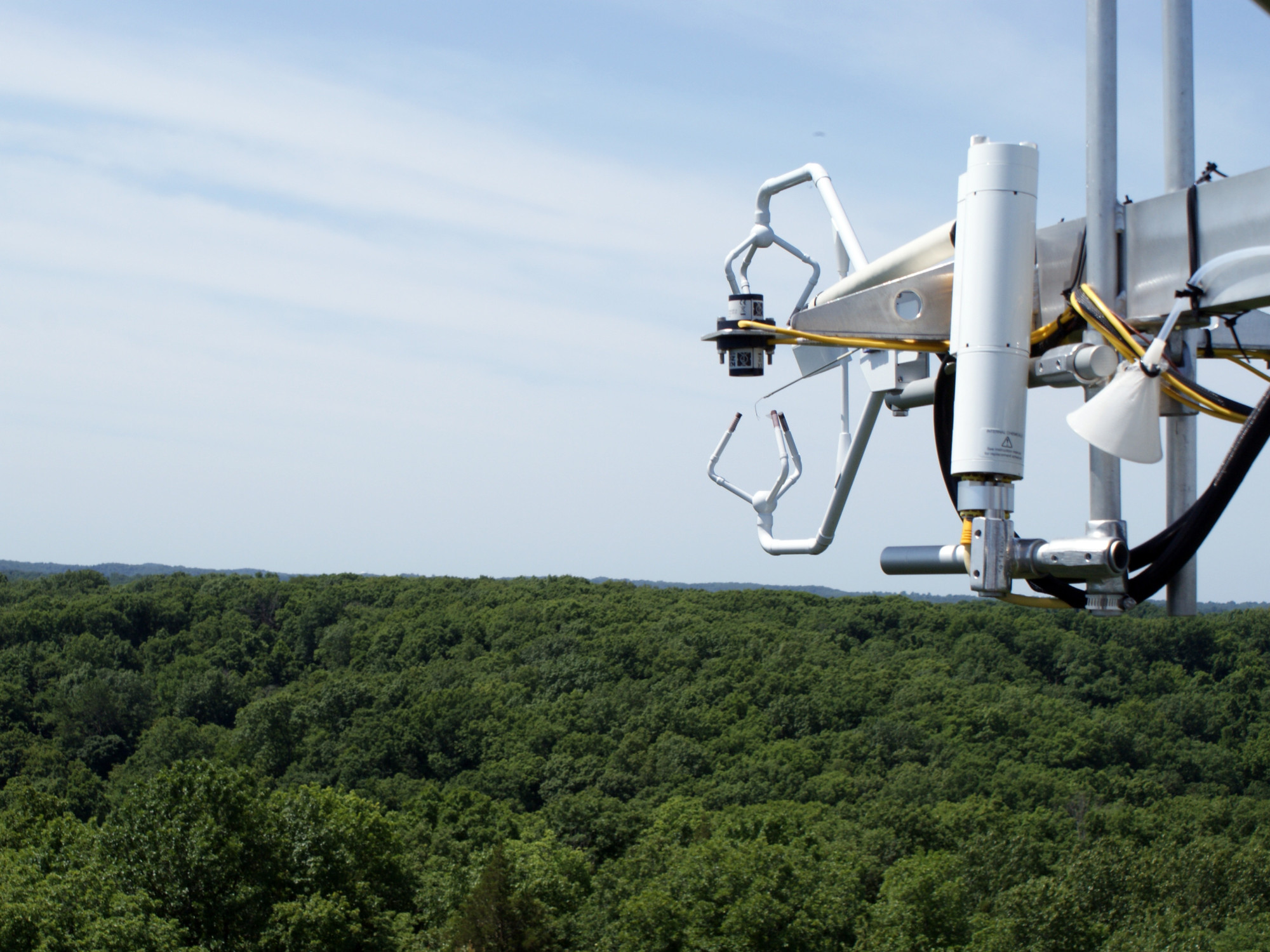A silent exchange between land and air reveals what we don’t know.
IN THE dense, dark night of the oak-hickory forest in the Ozarks, the soil breathes. Burrowing worms, twitchy protozoa, and roots of all sizes join the imperceptible breath that the forest soil takes, inhaling oxygen from air pockets in the earth and exhaling carbon dioxide that wafts up into the tree canopy. At sunrise, billions of forest leaves would take what the soil exhaled during nighttime and give something back, sucking in carbon dioxide for the hard work of photosynthesis, and releasing oxygen to complete the exchange.
This silent exchange between land and air is what scientists call a carbon flux, a key piece of Earth’s much larger carbon cycle. Somewhere in this temperate forest is a 100-foot tower with prongs and probes that can measure these fluxes. Like a Godzilla-sized breathalyzer, it scans the air for answers. How strong was that waft of air? How much carbon dioxide was in it? How moist was it? How warm or cool?
Researchers such as Kevin Schaefer at the University of Colorado Boulder read these fluxes like a vital sign of the planet’s health. They use computer models of the fluxes to understand how this exchange between land and the air will react to future scenarios, such as a much warmer Earth. Studies say that plants can grow up to 75 percent more if carbon dioxide doubles in the atmosphere. Will this and longer growing seasons be the norm, or will drought be a stronger player? How much will ecosystems change? Scientists are turning to these models for answers; yet how reliable are they to begin with? “We need models that we can trust today if we are going to make predictions about the future,” Schaefer said. “But right now, these fluxes are a primary source of uncertainty in projections of future climate.”
Originally published in Sensing Our Planet: NASA Earth Science Research Features. Read the full story here.
